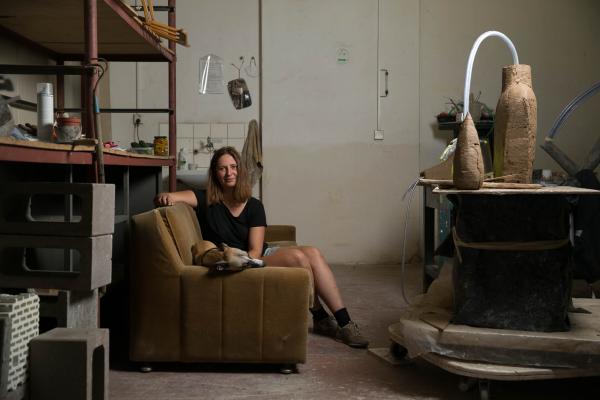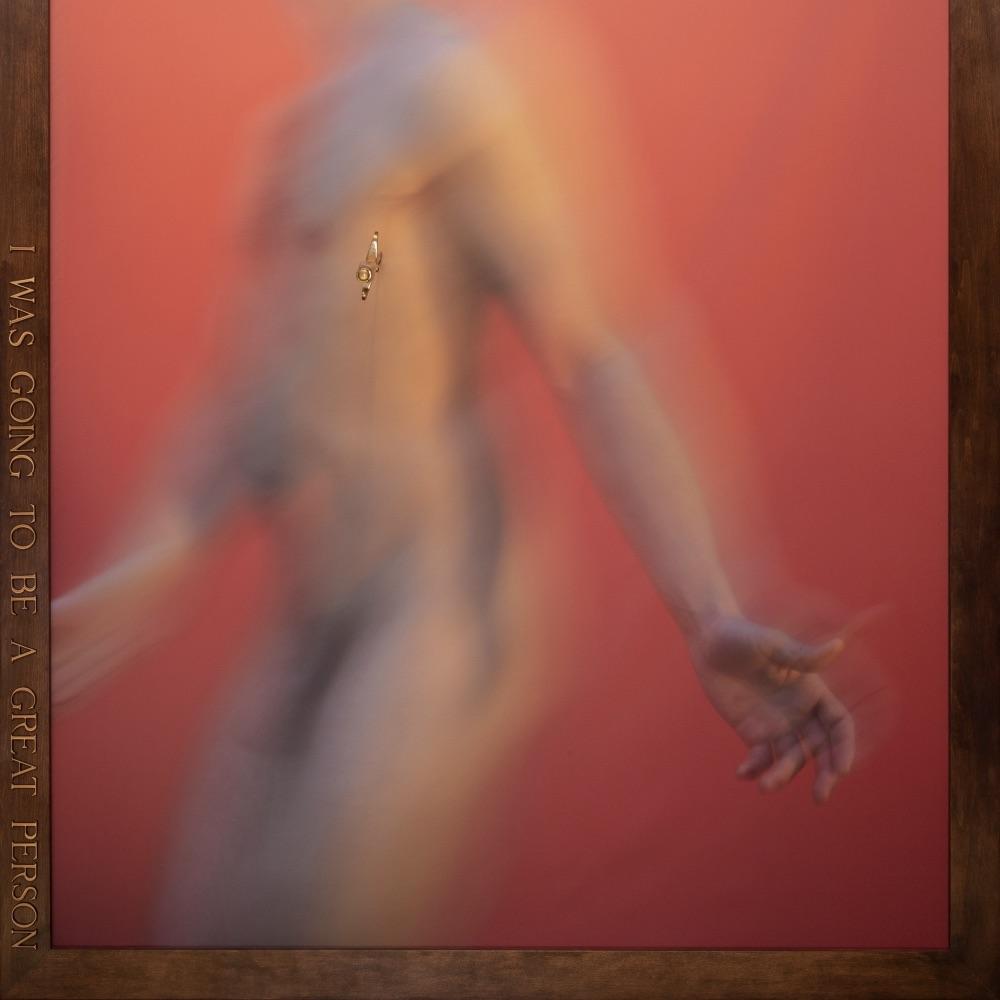
Sabina Knetlová (*1996) is a graduate of the Sculpture Studio under the direction of Jaroslav Koléšek at the Faculty of Arts of the University of Ostrava. Her work has a significant element of material, which is concrete. She creates her concrete sculptures by pressing concrete into plaster moulds. She often complements the raw surface of the sculptures with prefabricated materials, rubber tubing or natural material, creating new connections in the elements used. Sabina Knetlova's minimalist depiction of hand gestures, torsos and figures is typical. She has presented her work in many exhibitions in the Czech Republic and abroad, for example at the Gallery of Fine Arts in Ostrava, the Czech Centre in Brussels, Karpuchina Gallery in Prague, as well as in the collective exhibition Commanded Release at the Telegraph Gallery. In August, Sabina Knetlová will be part of the traditional Telegraph Artists Presentation programme. On that occasion we have prepared some questions for her about her artistic work.
You originally applied for painting at the faculty, but you were not accepted. You were offered the alternative of sculpture. Why do you think you were offered this particular course? Do you think your admissions work was more conceptually situated in sculpture? Had you ever considered studying sculpture before?
Yes, I think that the works I applied with were painting-oriented. I remember having quite a problem navigating the space of the canvas/paper, which for me was both too big and too small, limiting by the given dimensions. Most of the time I couldn't cope with the background of the painting, so my paintings always depicted a particular situation against some monochrome background. But I never thought about studying sculpture until Jaroslav Koléšek came to me. He said that I had a sculptural painting, so if I wanted to try sculpture.
Was it a difficult decision for you?
It wasn't. After seeing the sculpture studios, which were full of light that day, I was clear that sculpture would be a much better path for me. I liked the variety that sculpture offers - the materials, the technology, the tools.
How did your work evolve and was Jaroslav Koléšek an influence on your work? How did you get into the archetype of figures?
Mr. Koléšek undoubtedly had a great influence on my work, especially in the first years of my studies, when one learns to model, see, feel the shape and composition. The Ostrava sculpture is moving in the direction of a solid, taut and clear shape, towards stylization and simplification of form. Throughout your studies you are referred to the work of Marius Kotrba, Jan Stursa, Matthias Bernard Braun and deeper - Egypt, antiquity. You don't come out of this unrecognized. I tried to resist it at the beginning, sometimes I even resisted it - I didn't want to model much, I enjoyed casting different sticks, branches, the texture of wood and building it into all kinds of landscape installations. Around the beginning of my MFA, I started to miss the figure, I missed my own morphology. I found it much better to sculpt a shape than just cast it. But I approached the figure rather timidly, at first I modelled mainly hands, then came legs and heads, and I am only now getting to a more complete figure.
You were inspired by Egyptian and Etruscan art, can you tell us how?
What I like about ancient sculpture is the energy that comes from these things. The fact that it doesn't crackle, but rather accumulates inside. The fact that these statues have been around for thousands of years and thousands more could be. It's as if they're not right here with us, but rather somewhere far behind us. They look through us, far beyond us, somehow across time... I don't think I can describe it the way I'd like to. I try to work with that inner energy in my sculptures.
The signs that you use in your work are different gestures and symbols that you put together in different connotations. Can you tell us something about them?
I like it when you can find a detail or gesture in a sculpture that can change or elaborate the narrative.
How did you come to combine concrete and various flexible or natural objects? Did you want to "breathe life" into them?
I'm all about contrast. Concrete is a dry, shape-absorbing, inflexible material. I needed to combine it with something opposite to it. The transparent garden hose is perfect for this. They are flexible, transparent and shiny. I use them as a kind of internal structure for the sculpture.
Do you see any connection between you and the Transavantgarde movement? Mimmo Paladino was very much into simplification like you, but he used a larger scale. Are you considering more monumental sculptures?
Mimmo Paladino and even Francesco Clemente are important authors for me. I identify with them through working with a personal mythology, using signs, symbols, creating stories. I like the mysticism that their works contain. In the case of Paladin, of course, I am close to his approach to the figure, drawing morphology from ancient sculpture. As for plans for more monumental scale sculptures, I don't have the courage to do that yet. Large sculptures require a different approach, and I don't even have the studio facilities for that. I need to progress gradually, the scale has actually been increasing since I was a student, so maybe in the future I will reach something even bigger. But in general I prefer the human scale of sculptures.
Does it matter to you where your work goes after you sell it or you do not have a connection with them?
I like to know where the sculptures are going. I'm most happy for a personal encounter and for the sculpture to become part of its owner's world. So I don't really care, but it's clear to me that in most cases I'm more likely to never see the sculpture again. I've learned to let them go.
What projects are you looking forward to this year?
I still have one group show coming up this year, otherwise I'll be slowly getting into sculptures for shows next year.







